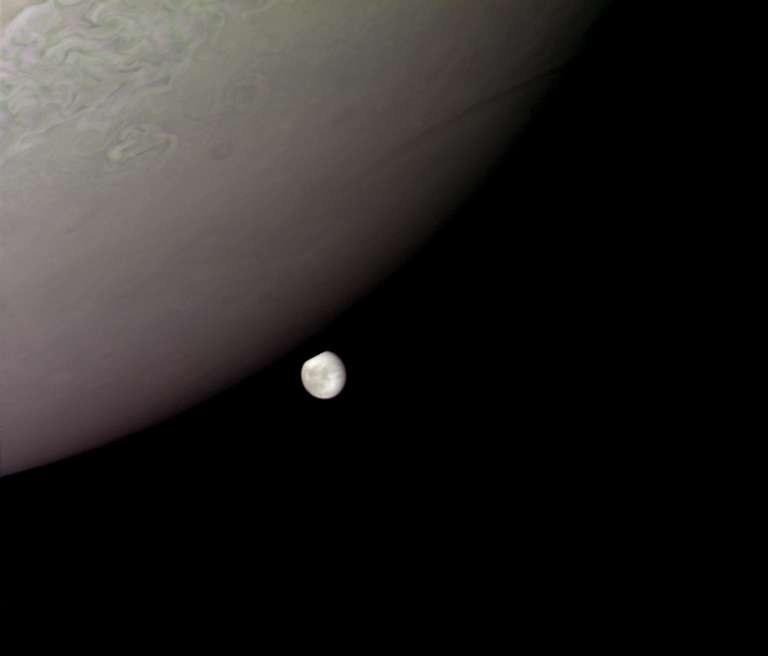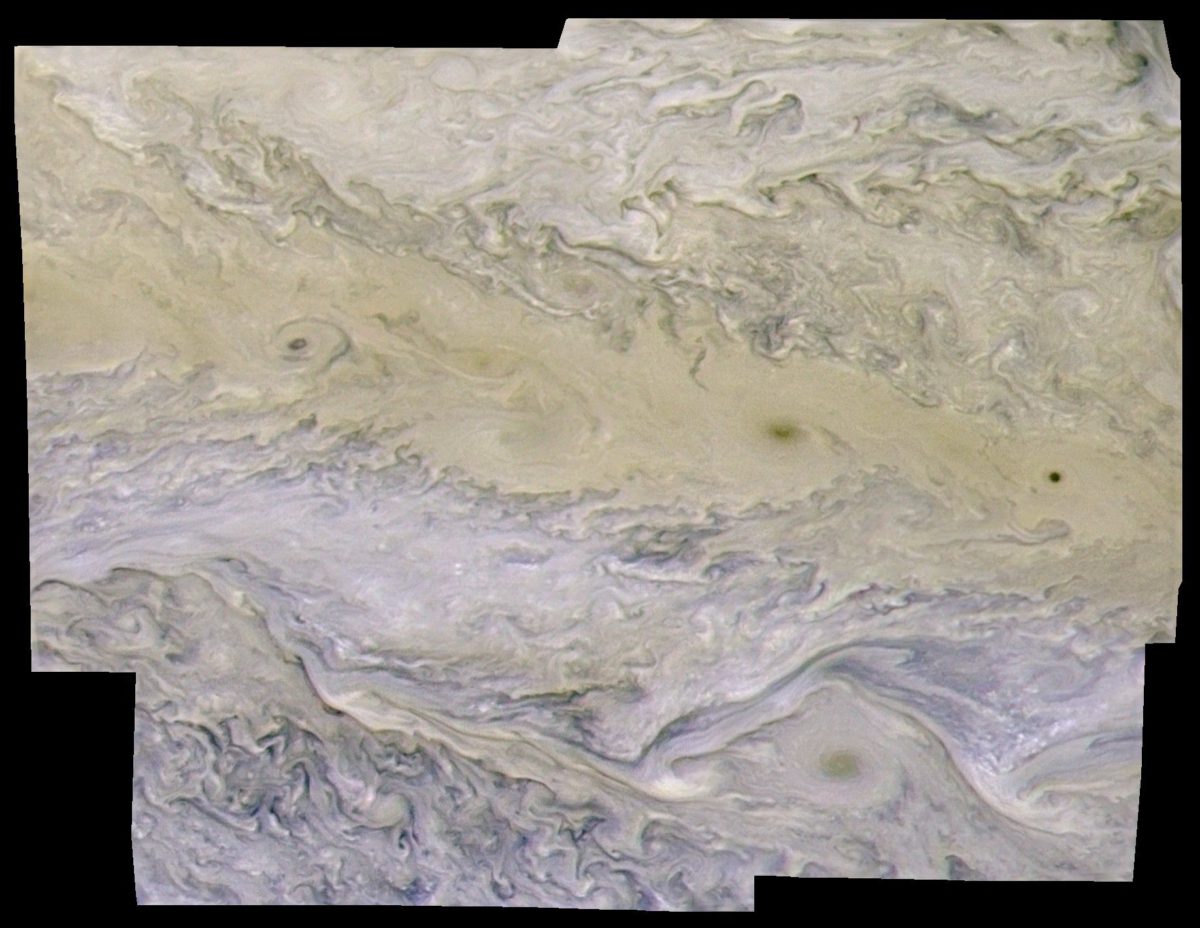Emily Lakdawalla • Mar 02, 2012
Pretty pictures: Voyager 2 at Jupiter
My most recent Snapshots from Space video discussed the forgotten treasures just waiting in the NASA data archives for skilled image processors to turn into lovely photos. Here are two perfect examples of that, made by Daniel Macháček from data returned by Voyager 2 during its approach to Jupiter.
The first is just plain cute: Europa playing coy, disappearing behind Jupiter's limb. Even at the relatively low resolution of this view, taken six days before Voyager 2's closest approach to the king of planets, you can detect the linea that seam Europa's surface.

This next one is turbulent and gorgeous. I especially like the little black dot at far right, which appears to be the eye of a small storm. From top to bottom, the image spans about 12,000 kilometers -- the diameter of Earth. That's not a small storm, is it?

Are you curious to peek into the treasure chamber from which Daniel retrieved these images? Here's a link to some search results using the search tool at the Rings Node of NASA's Planetary Data System. I asked it to show me all images returned by Voyager 2 between July 3 and 9, 1979. There are 4,131, and the Rings Node presents them color-coded according to which filter Voyager 2 had placed in front of its camera. Check them out and watch Jupiter and its moons grow and suddenly, as Voyager 2 passes its point of closest approach, become rapidly receding crescents. Awesome. The data are more than 30 years old and can still inspire.
The Time is Now.
As a Planetary Defender, you’re part of our mission to decrease the risk of Earth being hit by an asteroid or comet.
Donate Today

 Explore Worlds
Explore Worlds Find Life
Find Life Defend Earth
Defend Earth

